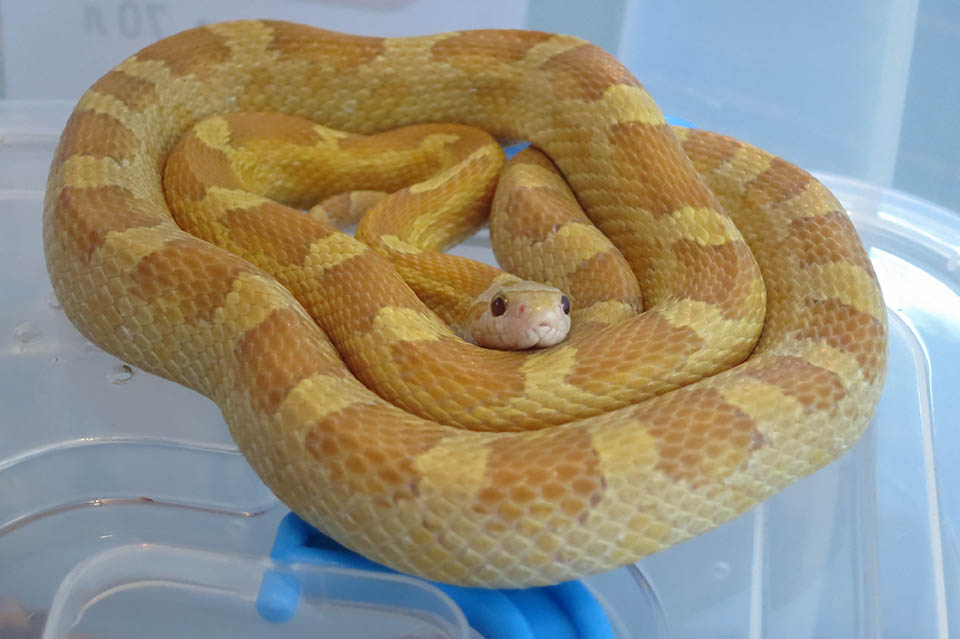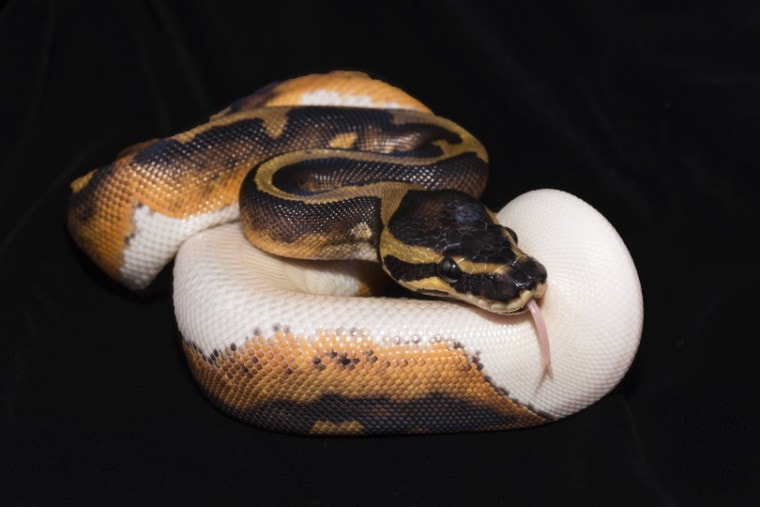
Ball pythons have been kept in captivity for longer than nearly any other snake. Therefore, we have influenced their development for a long time, leading to a wide range of ball python colors.
These different colors are referred to as morphs. Morphs are not different species. They are the same species of snake with specific gene mutations that cause them to look different. Some of these mutations are inherited from the snake’s parents, while others randomly appear.
Just like all creatures, snakes can randomly mutate, and sometimes this leads to new morphs. Some of these morphs are rarer than others. Combined morphs occur when a snake inherits more than one morph gene. Since these are often not on the same gene, they can be stacked to reveal unique patterns.
These combined morphs are usually the rarest. However, this isn’t necessarily always the case.
The 12 Rarest Ball Python Morphs
1. Bumblebee Ball Python

The bumblebee morph mixes two different morphs to create a unique pattern. The pastel morph produces a yellow-tan base and is co-dominant. This trait means that the snake will show some signs of the gene if they inherit one gene. However, they will show an even starker difference if they inherit two.
The spider morph gene is also necessary to make this pattern. This gene is dominant, so the snake only needs to inherit one gene to have the full spider effect.
This morph can look somewhat different depending on whether two pastel morph genes are inherited. There are tanned variants and highly bright yellow specimens. These snakes may also have scatterings of white.
While this morph is rare, they aren’t that expensive. They can cost around $400 to $800 each. The tanner varieties are usually not much more than your average snake.
2. Coral Glow Ball Python Morph
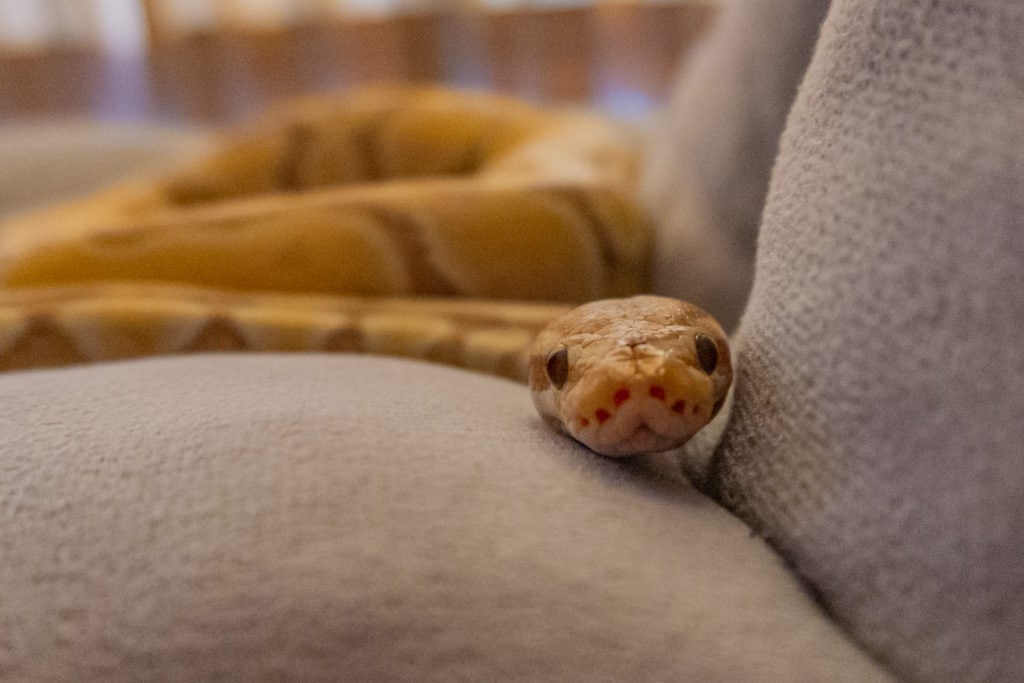
The Coral Glow python is an older morph. They were first bred in 2002 by the New England Reptile Distributors. It is co-dominant, so snakes that inherit two genes will end up even more affected. Usually, snakes with two genes are more expensive than those with just one.
This snake has a dark lavender base with bright yellow blotches. They are also called “white smokes” on account of their appearance.
These snakes usually cost about $300. That’s much less than some other morphs out there. They are more common mainly because they’ve been around for so long.
3. Butter Ball Python Morph
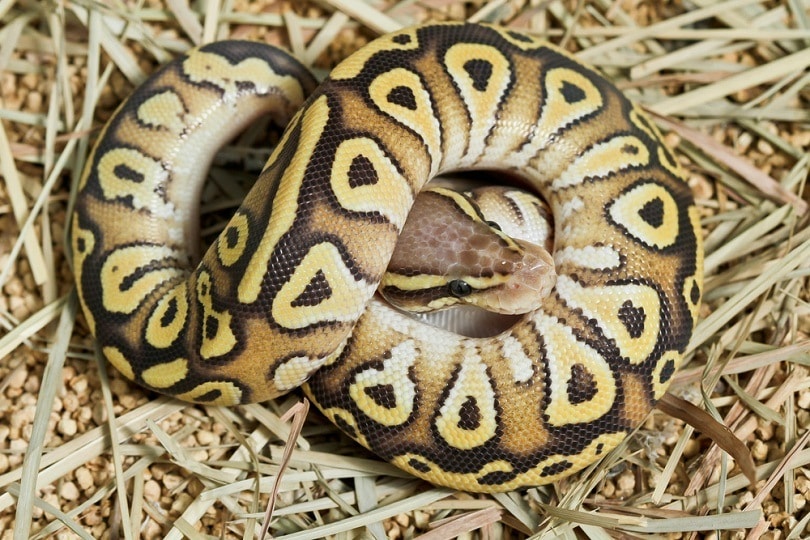
This morph was first discovered and bred in 2001. They’ve been around for a while, so they aren’t necessarily as rare as some other snakes.
This morph creates a yellow and brown pattern that is unique. The gene is co-dominant. If a snake inherits two of the morph genes, they are referred to as a super butter. They are typically brighter in coloration.
These pythons are not expensive, usually around $100.
4. GHI Ball Python

This basic morph wasn’t discovered until 2007. Therefore, they are still relatively rare. Not enough time has passed to get the gene widely circulated. Few breeders have snakes that carry the morph.
This snake has an almost black base with brown blotches on their skin. The blotches have a bright yellow outline.
It isn’t easy to find a pure GHI python. Often, they are mixed with other morphs that complicate their appearance. A pure morph often costs around $400, while a GHI mixed with other morphs costs less.
5. Sunset Ball Python Morph

The Sunset Ball Python morph is rare for several reasons. First, the morph gene was just discovered in 2012, so there aren’t that many snakes with it. Second, this trait is recessive, so the snake has to inherit two genes to have it at all.
This snake has a copper base with lighter blotches along their body. The head is typically darker than everything else.
Due to their rarity, they usually cost thousands of dollars. The average price is somewhere in the $4,000 range.
6. Acid Ball Python
This is a newer morph that was discovered in 2014. These snakes have a dark brown background color with lighter brown blotches. They aren’t as striking as other morphs, though their rarity still makes them quite expensive.
These snakes have a yellow underside with a solid black line running down the middle. This line makes them relatively easy to identify.
This morph will cost you at least $2,000 in most cases. It’s easy to breed due to its dominant nature, which helps bring the price down somewhat.
7. Scaleless Ball Python
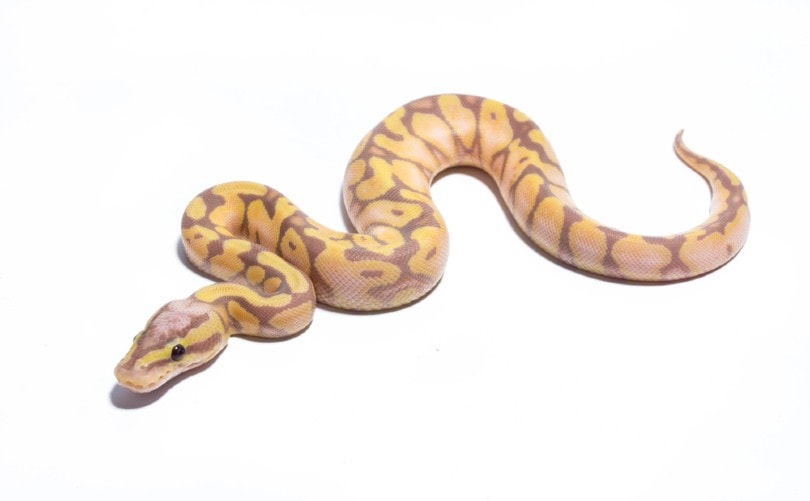
As the name suggests, this ball python morph is completely scaleless, except for the scales on their underside. These scales are required for the snake to move.
This gene is co-dominant. To get a snake with no scales along their whole upper side, they need to have two of the gene. If they have one, they will end up with a scaleless head, which is cool but not nearly as striking as a completely scaleless snake.
These snakes are expensive, often costing upward of $2,000. They’ve only been around since 2013, which is one reason that they are more expensive than most.
8. Dreamsicle Ball Python
This snake is a combination morph that was first created in 2007. This morph is a mix of the lavender albino gene and the piebald gene. Both of these genes are recessive, so the snake has to inherit two of each gene.
This makes breeding them quite tricky. You have to breed two Dreamsicle ball pythons together to end up with a 100% chance of getting a baby with the same morph. Otherwise, your chances are much lower.
Due to the piebald gene, this snake has an orange base and huge white patches on their skin. The ratio of white to colored patches is entirely random. Those with more colored patches typically cost less. People generally want their snakes more “bald.”
Due to the use of two rare morphs, this morph combination is extra rare. They usually cost above $2,000.
9. Banana Mimosa Ball Python
Out of all the snakes on this list, this one is probably the rarest! Several morphs are required to create this one, which makes them exceedingly rare. Getting all of these morphs on a single snake is quite tricky.
First, a banana ball python morph is required. This morph has yellow blotches instead of the usual light brown ones. This gene is co-dominant, so the snake will be especially bright if they inherit two of the same gene.
Second, the mimosa morph is required. This morph is actually a mixture itself, requiring both the ghost morph gene and champagne gene.
There are so many genes required to make this morph that breeding them is nearly impossible!
Therefore, these snakes can cost upward of $6,000, if you can find one. It takes an accomplished breeder to get any.
10. Piebald Ball Python
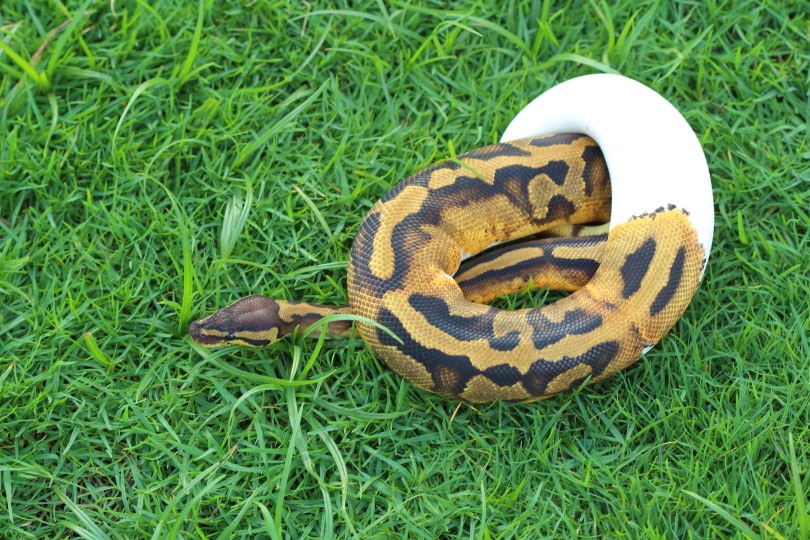
This morph was discovered back in 1997. It causes some of the snake’s pattern to look like it has been “erased.” The snakes look mostly normal, but they have parts of their patterns missing. These snakes are often described as having “bald” spots. Their head usually looks normal.
This gene is recessive. So, the snake has to inherit two of the gene to affect their coloring.
The number of “bald” spots is entirely random. Those with more bald spots are usually more expensive because they’re sought after more highly.
Typically, a snake with many bald spots ends up costing around $2,000. A snake without many at all usually costs around $500.
11. Lavender Albino Ball Python
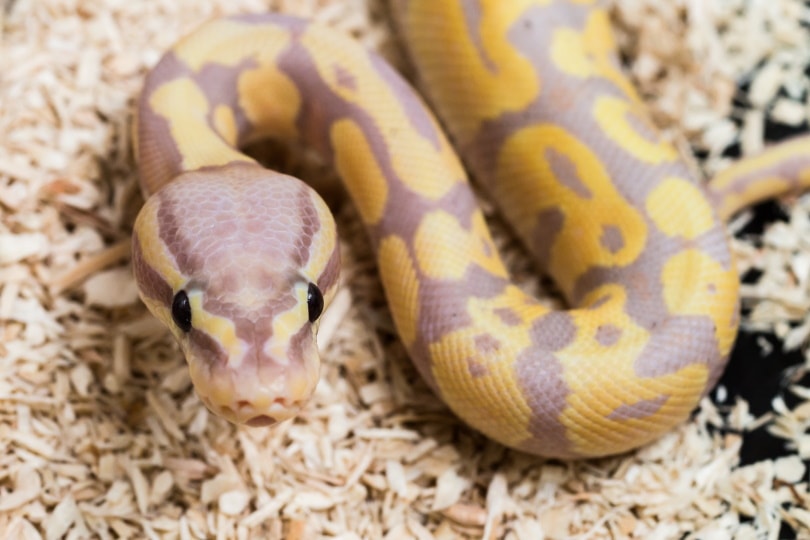
This gene produces a ball python that looks similar to an albino one, but with a lavender base.
Their botches are usually bright yellow with deep red eyes, similar to a normal albino. The base color and blotches produce a high-contrast snake that looks quite striking.
However, this snake is not extremely rare, so they cost around $600. They were first discovered in 2001, which makes them a bit older than most morphs.
12. Highway Ball Python

This snake is a combination morph. It is a mix between a gravel morph and a yellowbelly morph. It produces a snake with a copper base and golden blotches. There is a yellow stripe across their back that is broken at random points.
Both these genes are co-dominant. Therefore, they produce a more exaggerated effect if the snake inherits two of both genes.
Generally, people want the snakes that are the most exaggerated, so they are often the most expensive!
These snakes often cost around $600. Those with less extravagant looks may cost less.
Final Thoughts
There are many different ball python morphs out there. These snakes act just like usual snakes, but they have striking appearances.
Rarer morphs are usually those that feature multiple morphs in their gene pool or were only recently discovered. It often takes a while for these morphs to get circulating and become widely available, so new morphs are quite expensive!
Recessive morphs are also rare. These require two traits from both parents for the morph to show up at all. For this reason, they are much harder to breed.
Whatever rare morph you like, you should be prepared to pay for it. Some of these are in the $500 range, which is much more than a regular ball python. It can go up into the thousands for the rarest ones!
Other notable morphs to read on:
Featured Image Credit: Darlene Munro, Shutterstock




